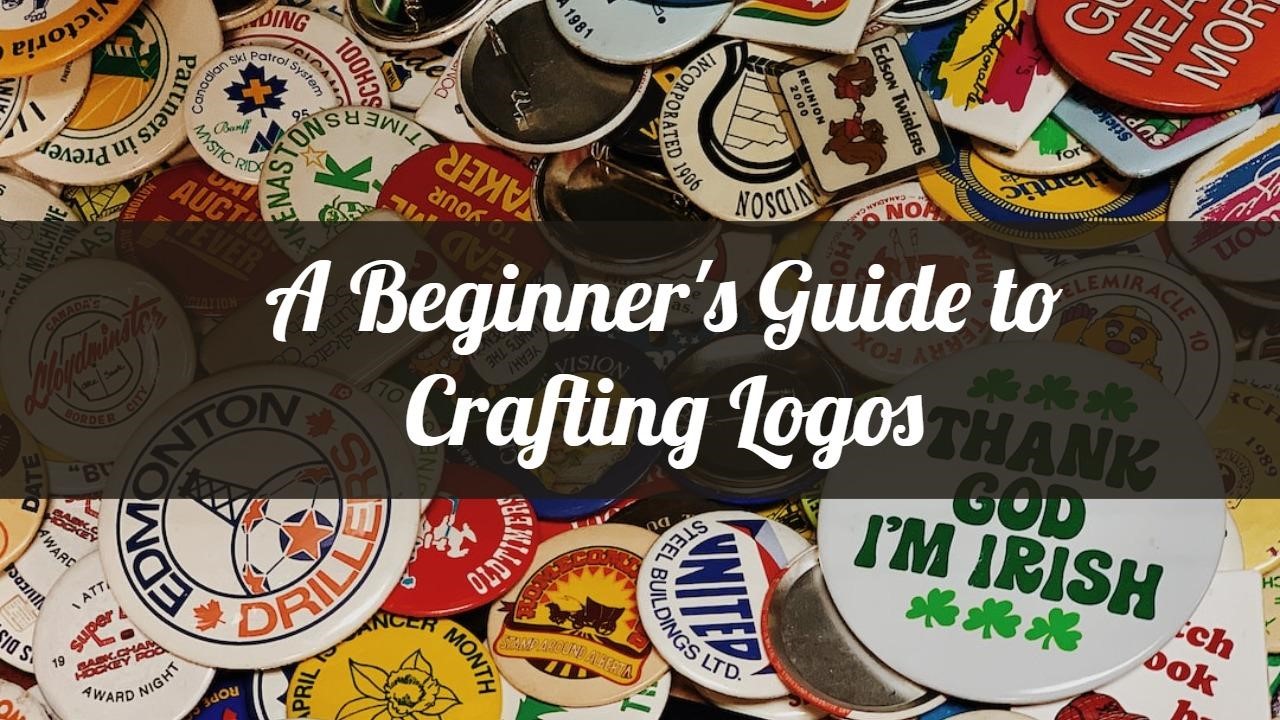Logos are the unsung heroes of branding, silently communicating a company’s identity in a visually appealing manner. In this beginner’s guide, we’ll explore the intricacies of logo design, from understanding the basics to creating a memorable emblem that stands the test of time. Whether you’re aiming for simplicity or a more elaborate concept, mastering the art of logo design is crucial for establishing a strong and recognizable brand presence.
Importance of Logos
Logos are the face of a brand, acting as a visual representation of its values and identity. A well-crafted logo can leave a lasting impression on customers and foster brand loyalty.
Role of Logos in Branding
Logos play a crucial role in establishing brand recognition. They serve as a visual anchor for consumers, instantly connecting them with a particular company or product.
Understanding the Basics
Elements of a Logo
Colors
The choice of colors in a logo can evoke specific emotions and convey the brand’s personality. Understanding color psychology is key to creating a compelling design.
Shapes
Shapes in a logo contribute to its overall aesthetic. Whether using geometric shapes or organic forms, each element should align with the brand’s identity.
Fonts
The typography used in a logo can convey various messages. Selecting the right font is essential for ensuring readability and reinforcing brand characteristics.
Logo Design Principles
Simplicity
Simplicity is the hallmark of a great logo. A simple design is more likely to be memorable and recognizable, enhancing its effectiveness.
Versatility
A well-designed logo should be versatile, maintaining its integrity across various platforms and sizes without losing clarity.
Memorability
Creating a memorable logo involves a combination of unique elements that leave a lasting impression on the audience.
Researching Your Brand
Identifying Target Audience
Understanding the target audience helps in tailoring the logo to resonate with potential customers, making it more impactful.
Analyzing Competitors’ Logos
Analyzing competitors’ logos can provide insights into effective design strategies and help in differentiating your brand.
Defining Brand Personality
Defining the brand’s personality guides the design process, ensuring the logo aligns with the overall brand image.
Sketching and Brainstorming
Importance of Sketching
Sketching is a vital step in the creative process, allowing designers to explore multiple ideas quickly.
Exploring Various Ideas
Brainstorming sessions foster creativity, encouraging the generation of diverse concepts that can be refined later.
Refining Concepts
Refining initial sketches involves evaluating their effectiveness, ensuring they align with the brand’s identity and goals.
Typography in Logo Design
Selecting Appropriate Fonts
The choice of fonts influences the overall tone of the logo. Matching the font to the brand’s personality is essential for effective communication.
Balancing Text and Visuals
Maintaining a harmonious balance between text and visuals ensures that neither element overwhelms the other.
Color Psychology
Impact of Colors on Emotions
Colors evoke specific emotions, and understanding color psychology helps in creating a logo that resonates with the target audience.
Choosing a Color Palette
Selecting a cohesive color palette enhances the visual appeal and cohesiveness of the logo.
Creating a Scalable Design
Importance of Scalability
A scalable design ensures the logo remains clear and recognizable, whether displayed on a billboard or a business card.
Ensuring Clarity in Various Sizes
Optimizing the logo for different sizes prevents loss of detail and maintains its impact across various applications.
Feedback and Revisions
Seeking Constructive Feedback
Gathering feedback from peers and target audience members provides valuable insights for improvement.
Making Necessary Adjustments
Revisions based on feedback contribute to the continuous improvement of the logo, ensuring it meets the desired objectives.
Finalizing Your Logo
Choosing the Right File Formats
Selecting appropriate file formats ensures the logo remains crisp and clear across different platforms and applications.
Preparing for Various Platforms
Adapting the logo for different platforms ensures a consistent and professional brand image.
Protecting Your Logo
Trademarks and Copyrights
Understanding the legal aspects of logo design is crucial for protecting intellectual property and maintaining exclusive rights to the design.
Ensuring Legal Ownership
Securing legal ownership of the logo safeguards against unauthorized use and replication by competitors.
Case Studies
Examining Successful Logo Designs
Analyzing successful logos provides inspiration and insights into effective design strategies.
Learning from Common Mistakes
Understanding common mistakes helps in avoiding pitfalls and creating a more effective logo.
DIY vs. Professional Designers
Pros and Cons of Each Approach
Weighing the advantages and disadvantages of designing a logo independently versus hiring a professional helps in making an informed decision.
When to Hire a Professional
Recognizing when professional expertise is necessary ensures the creation of a high-quality and impactful logo.
Staying Updated with Design Trends
Importance of Staying Current
Remaining informed about current design trends ensures that logos remain relevant and appealing to the target audience.
Balancing Trends with Timeless Design
Combining contemporary trends with timeless design principles results in logos that stand the test of time.
Conclusion
In this beginner’s guide, we’ve explored the essential elements of crafting logos. From understanding the basics to finalizing and protecting your design, the process is a creative journey that requires careful consideration and attention to detail. Embrace your creativity and design a logo that not only represents your brand but leaves a lasting imprint on your audience.
FAQs
- Do I need graphic design skills to create a logo?
- While graphic design skills are beneficial, there are user-friendly tools available for beginners.
- How important is color selection in logo design?
- Color selection is crucial as it influences the emotional response and perception of the brand.
- Can I change my logo in the future?
- Yes, logos can be updated, but it’s essential to consider the impact on brand continuity.
- What file formats are suitable for a versatile logo?
- SVG and PNG are commonly used formats for maintaining clarity and versatility.
- How do I protect my logo from being copied?
- Registering trademarks and copyrights provides legal protection against unauthorized use.
